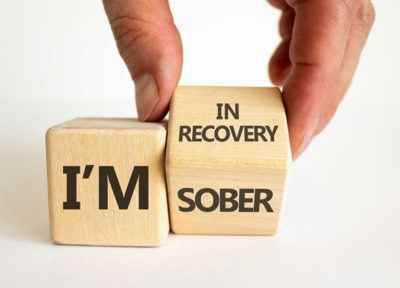
In today’s wellness-driven world, recovery from addiction is no longer just about staying sober—it’s about creating a lifestyle that supports healing, balance, and long-term joy. As more individuals and families understand the need for a holistic approach to sobriety, one truth is becoming clear: environment and daily habits can significantly influence the outcome of recovery.
From the space we live in to the people we surround ourselves with, everything matters. And when those lifestyle choices are paired with the right professional help, recovery is no longer survival—it becomes transformation. In places like Colorado, where nature and wellness culture go hand in hand, treatment centers such as Mile High Recovery Center in Colorado offer a structured foundation that allows clients to rebuild from the inside out while aligning their environment with their recovery goals.
The Home Environment: A Sanctuary for Recovery
Our homes are more than just places to live—they are reflections of our mental and emotional state. For someone in recovery, a chaotic or triggering environment can increase the risk of relapse. On the other hand, a calm, intentional space can reinforce positive changes learned in treatment and support ongoing sobriety.
1. Declutter and Simplify
A clear space leads to a clear mind. Minimizing clutter can reduce stress and help those in recovery feel more in control of their surroundings. This small but powerful shift can reinforce inner stability.
2. Use Natural Light and Soothing Colors
Designing with recovery in mind often means choosing soft, natural lighting and calming color schemes. Think warm neutrals, blues, and earth tones that create an atmosphere of peace and mindfulness.
3. Create Spaces That Serve Sobriety
Designate areas in the home for journaling, meditation, reading, or therapy sessions. These intentional spaces support healthy coping skills and encourage consistency in daily routines.
4. Make It Yours
Personal touches—like photos of loved ones, recovery quotes, or artwork that symbolizes growth—can remind you daily of your progress and the life you’re building.
Lifestyle Choices That Reinforce Sobriety
Sobriety isn’t something that happens once in a treatment center—it’s sustained through small decisions every day. Your lifestyle, routines, and relationships either support or sabotage your progress. Recovery becomes stronger when your everyday life mirrors the structure and intention of your treatment plan.
1. Exercise & Movement
Movement is a proven mood-booster. Whether it’s yoga, hiking Colorado’s trails, or just a walk around the neighborhood, incorporating daily physical activity supports brain chemistry and builds self-esteem.
2. Nutrition That Heals
Food is medicine. A diet rich in whole foods, hydration, and vitamins can repair some of the internal damage addiction has caused and promote mental clarity.
3. Digital Detox & Boundaries
Setting boundaries with your devices and digital input—especially social media—can reduce anxiety and help maintain focus on your recovery goals.
4. Meaningful Relationships
Spend time with people who support your sobriety and future. Whether they are recovery peers, family, or friends, the quality of your connections often determines the quality of your life.
Why Treatment Still Matters
Even with a healthy home and lifestyle, recovery often requires more. The role of professional treatment is to help you dig into the underlying issues, provide a safe place for healing, and equip you with tools that last long after you leave the center.
Mile High Recovery Center's residential drug rehab in Colorado is a great example of how treatment can integrate seamlessly with lifestyle changes. Their approach includes residential treatment, outpatient programs, therapy, and ongoing support tailored to each individual. What sets them apart is not just the clinical care, but the way they empower clients to build lives that sustain sobriety—long after they walk out the doors.
When combined with lifestyle adjustments at home, this professional guidance makes recovery feel less like restriction and more like freedom.
Bringing It All Together: How Environment, Lifestyle & Treatment Align
Here’s what happens when these three elements work together:
Treatment provides the foundation.
Home becomes a safe place to reinforce what’s learned.
Lifestyle becomes the rhythm that sustains recovery over time.
You learn in treatment, practice at home, and reinforce through daily habits.
Tips for Harmonizing Your Recovery Environment
Do a Home Reset After Treatment
Take a day to reorganize your space. Let go of items tied to your past, clean with intention, and refresh with calming elements.Build Recovery Into Your Routine
Schedule therapy, recovery group meetings, or check-ins. Let your calendar reflect your commitment.Share Your Environment With Supportive People
Your home should be a place where you feel safe and encouraged. Whether it's roommates, family, or your partner—everyone should align with your sobriety goals.
Final Thoughts About Environments for Addiction Recovery
You don’t have to choose between healing and living well. Sobriety can be elevated, empowering, and fully integrated into a lifestyle you love. And when you combine a supportive home environment, healthy lifestyle choices, and professional treatment from centers like Mile High Recovery Center in Colorado, you create a recovery journey that’s not only sustainable—but beautiful.
Because the goal isn’t just to stop using. The goal is to create a life so fulfilling, you never want to go back.



(0) comments
We welcome your comments
Log In
Post a comment as Guest
Keep it Clean. Please avoid obscene, vulgar, lewd, racist or sexually-oriented language.
PLEASE TURN OFF YOUR CAPS LOCK.
Don't Threaten. Threats of harming another person will not be tolerated.
Be Truthful. Don't knowingly lie about anyone or anything.
Be Nice. No racism, sexism or any sort of -ism that is degrading to another person.
Be Proactive. Use the 'Report' link on each comment to let us know of abusive posts.
Share with Us. We'd love to hear eyewitness accounts, the history behind an article.